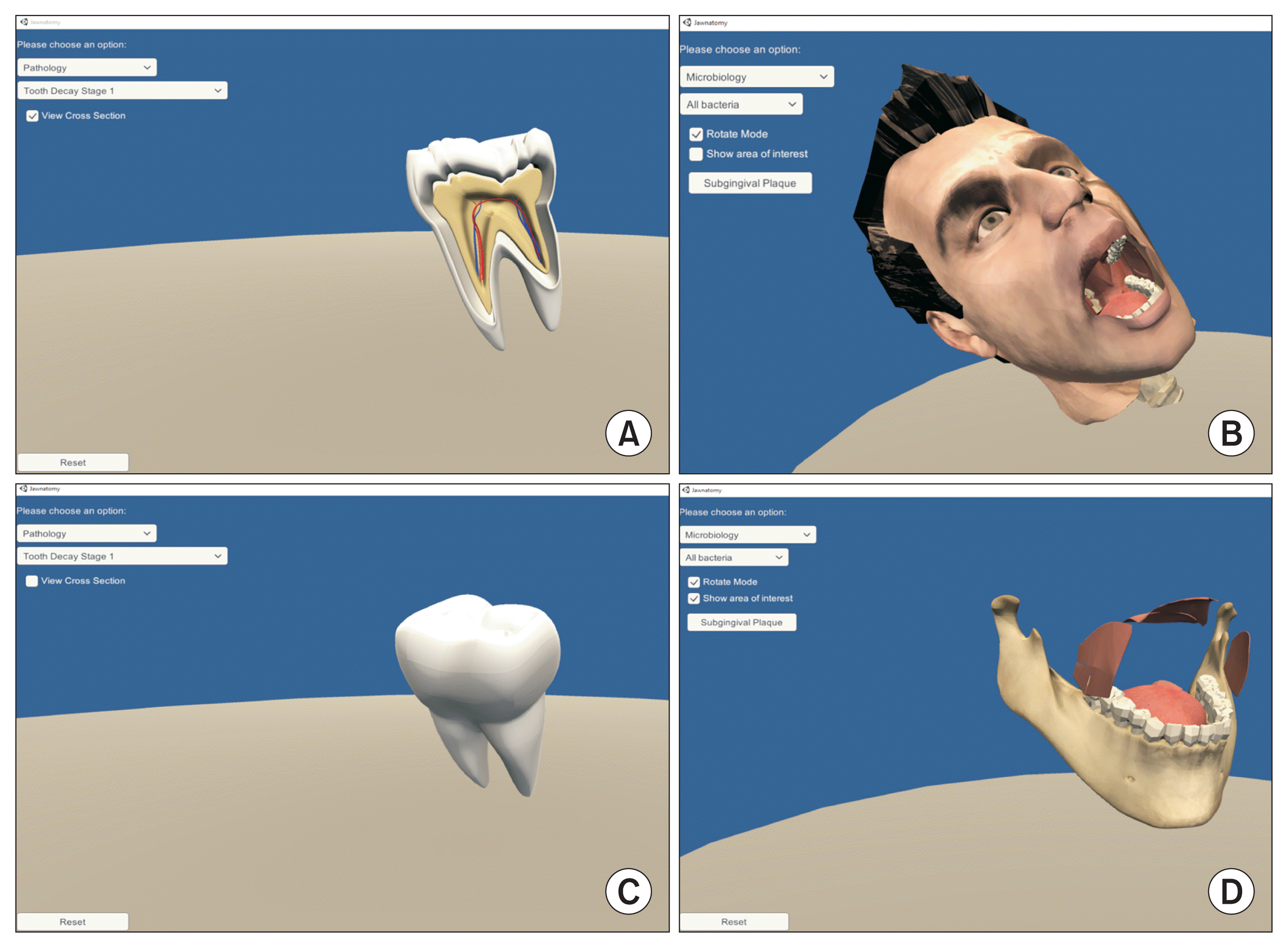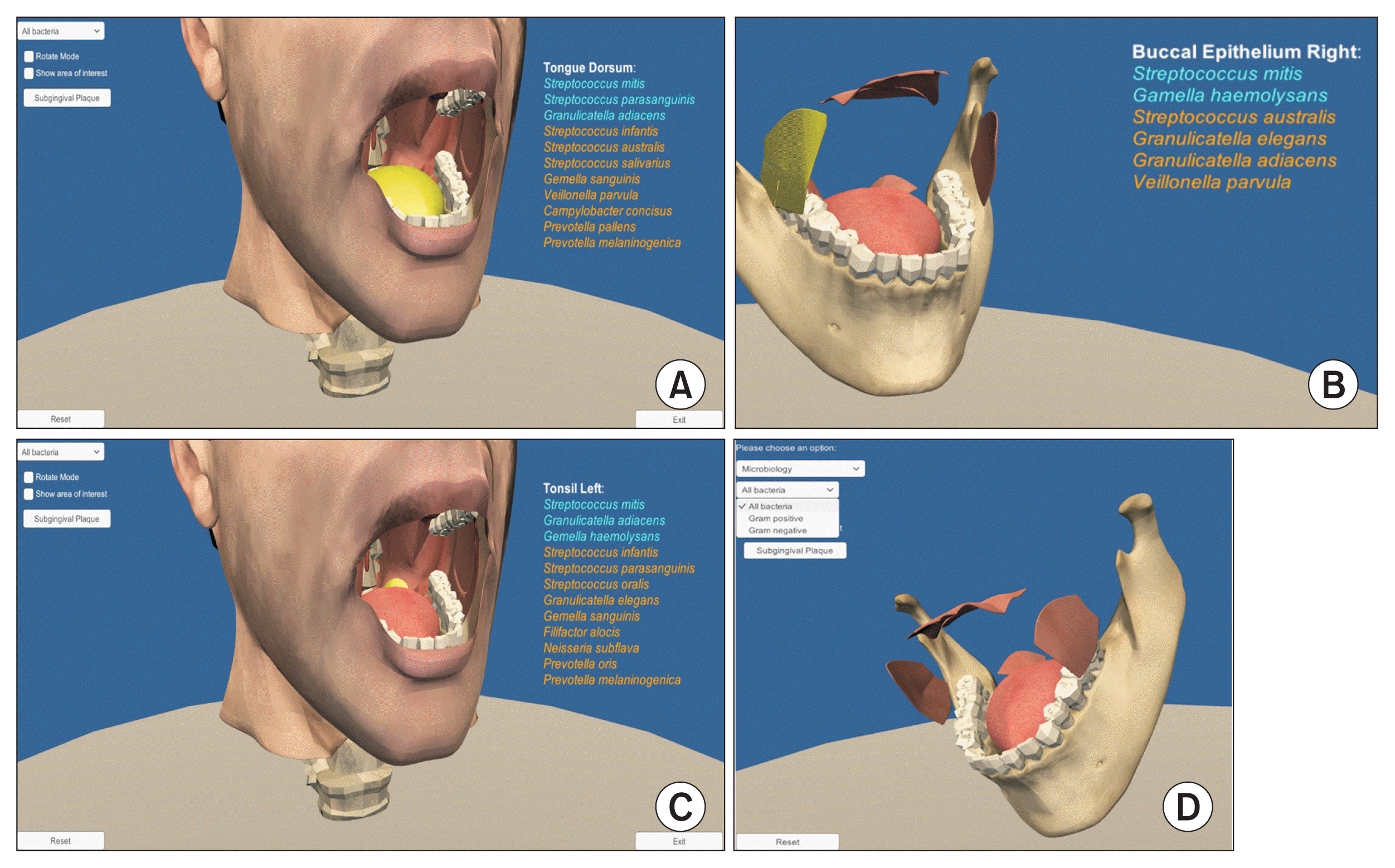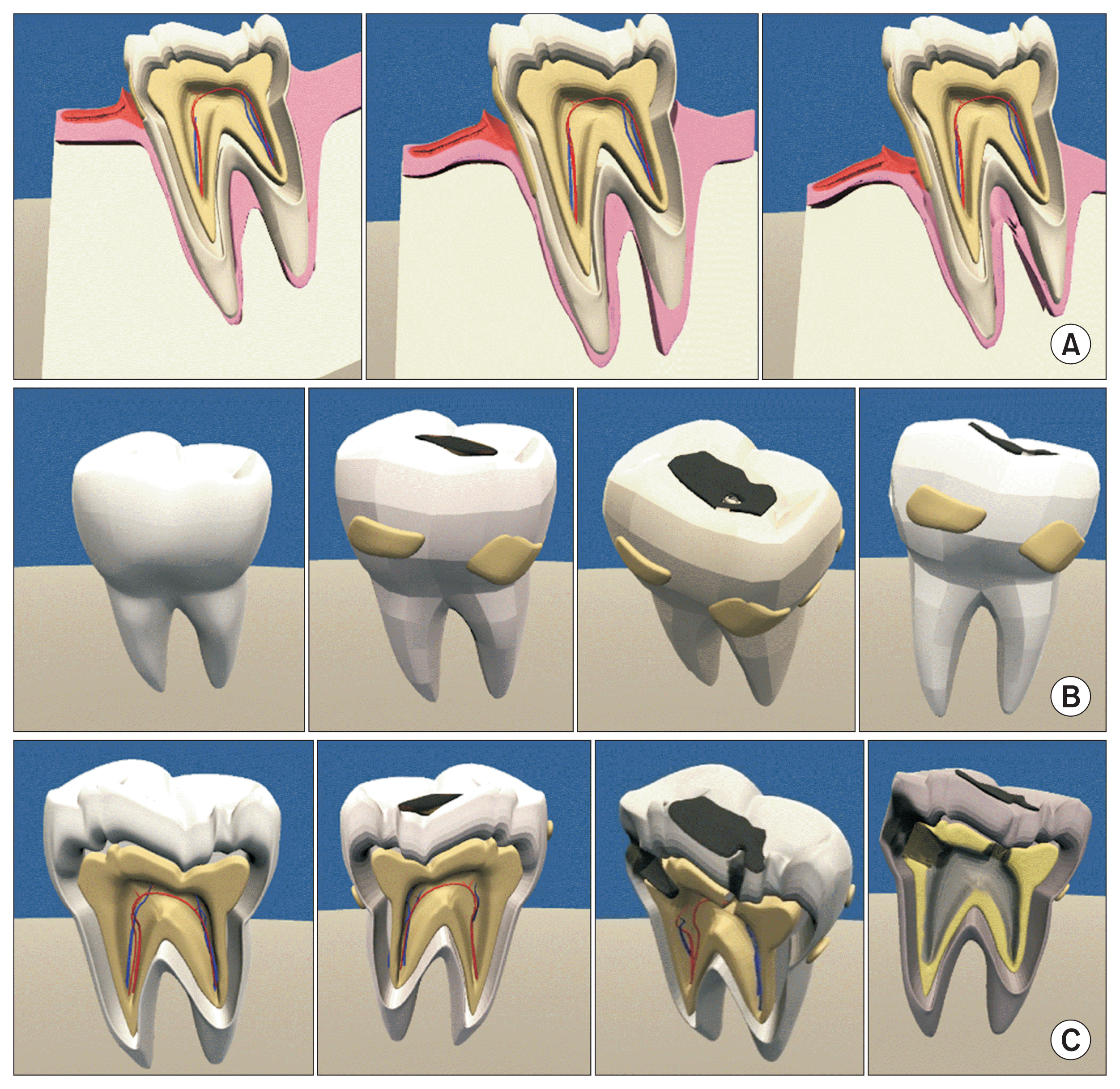I. Introduction
II. Description
 | Figure 1Learning modules of Jawnatomy. Along with a model of the physiological condition, Jawnatomy offers two other learning modules: (A) pathology and (B) microbiology. Jawnatomy allows learners to view the anatomical structure of a healthy tooth in both its surface view (C) and cross-sectional view (A). (D) Students can also remove external facial structures to visualize internal oral structures to learn oral anatomy. |
 | Figure 2Microbiology module of Jawnatomy. Jawnatomy allows the learner the explore the normal microbial flora of the oral cavity. When selected, each oral cavity region shows the list of bacterial species found in that area. The lists of bacteria colonizing the tongue dorsum, buccal epithelium, and tonsil are shown in (A), (B), and (C), respectively. The list of bacteria is color-coded according to their prevalence, with those in blue being more abundant in that region. (D) Students can also select and group bacteria according to their cell wall properties (Gram-positive and Gram-negative). |
 | Figure 3Pathology module of Jawnatomy. The pathology module of Jawnatomy allows learners to visualize the pathological processes observed in (A) periodontal disease and (B, C) dental caries. Periodontal disease is a chronic inflammatory disease that starts with bacterial plaque accumulation in the subgingival region. (A) Students can observe the progression of gingival inflammation and gradual loss of underlying alveolar bone to understand the development of periodontal disease. (B) Learners can also visualize plaque accumulation and dental caries formation on a molar tooth. They can rotate the tooth model to different angles and magnify areas to observe structural details. (C) Students can switch to the cross-sectional mode to analyze the effect of dental caries on the tooth’s internal structure. This module allows students to understand the gradual progression of the disease and compare it with healthy teeth and oral structures. |




 PDF
PDF Citation
Citation Print
Print



 XML Download
XML Download